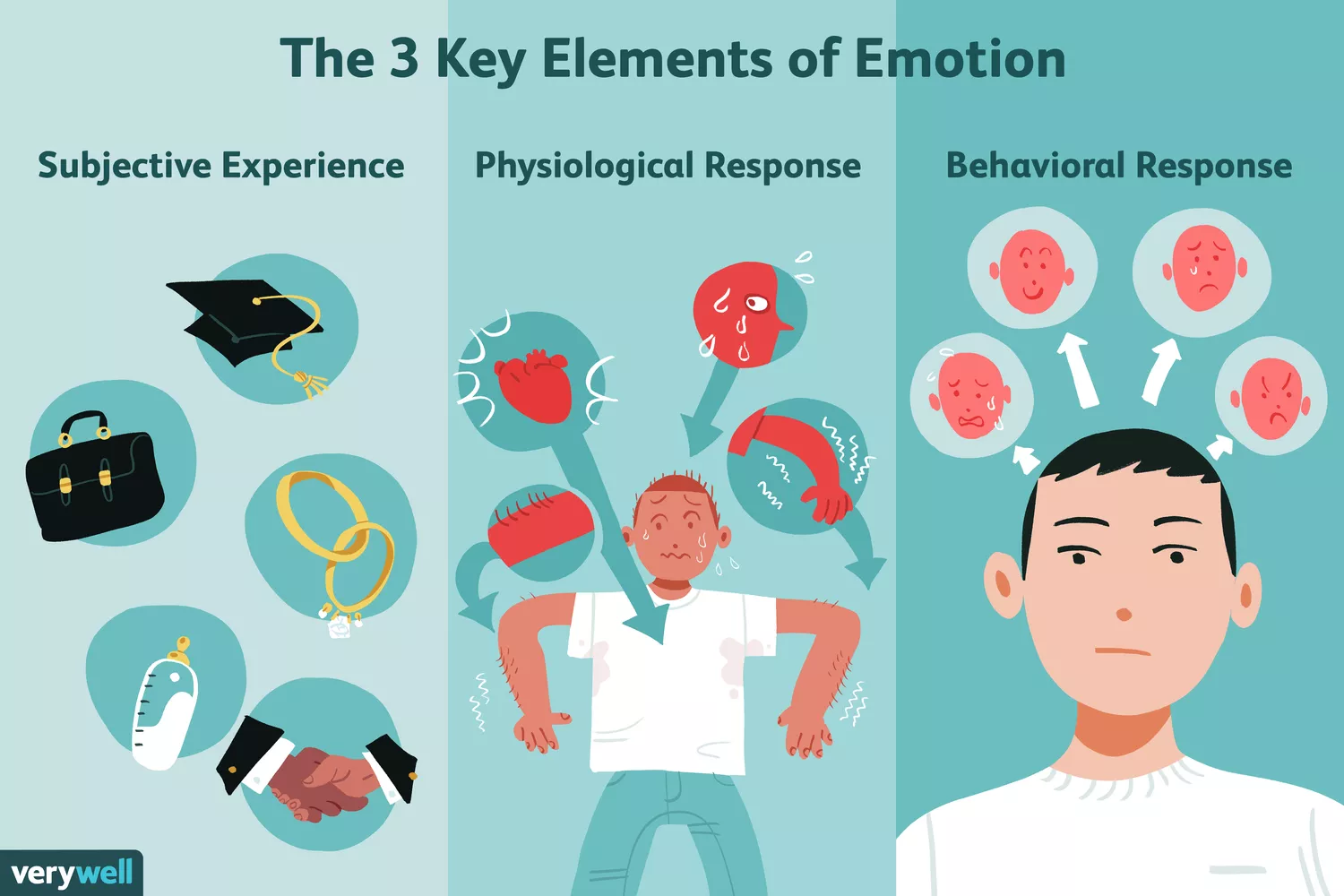By Sandy Woznicki
"Lean into the discomfort of the work." ~Brené Brown
For decades, anxiety was a constant companion, a heavy blanket dampening every experience. Many people believe that to find happiness, one must eradicate all feelings of anxiety. However, the surprising truth is that embracing these uncomfortable emotions can be the ultimate key to happiness. This journey isn't about eliminating anxiety but rather learning to lean into it, allowing it to flow through you instead of getting stuck.
By accepting our full emotional spectrum, including fear and sadness, we paradoxically unlock a profound capacity for genuine joy and contentment. This transformation begins with understanding our resistance to discomfort and cultivating new ways to engage with our inner world.
Table of Contents
- The Paradox of Resistance: Why We Block Happiness
- Embracing Discomfort: The Proven Path to Emotional Freedom
- Understanding Emotional Release: The Body's Natural Mechanism
- Unlocking a Richer Emotional Landscape: Beyond Anxiety
- Actionable Strategies for Cultivating Emotional Resilience
The Paradox of Resistance: Why We Block Happiness
For years, my life seemed outwardly successful, yet I felt an internal hollowness. Beneath the veneer of a good job, strong relationships, and comfortable living, a persistent tension resided in my chest, a knotted stomach, and a constant lump in my throat. This pervasive anxiety wasn't just a fleeting feeling; it was the very core of my existence, preventing me from experiencing true joy.
I worried relentlessly about judgment from others, which further fueled my internal discomfort. Even during moments that should have been unequivocally happy--a surprise birthday party, Christmas morning, or a lazy Sunday with a perfect cup of coffee--genuine happiness eluded me. I could intellectualize that these were positive situations, but the emotion itself never truly surfaced in my body.
This emotional numbness stemmed from a deep-seated resistance to discomfort. I erroneously believed that I shouldn't feel sadness or fear, seeing them as "bad" emotions to be suppressed. Whenever that familiar mental and physical tension arose, my instinct was to shut down, to block out anything negative. This constant battle against my own feelings created an impenetrable wall.
What I didn't realize then was a fundamental truth of human emotion: we cannot selectively turn off certain feelings without dimming the entire spectrum. Attempting to suppress anxiety or sadness inadvertently blocks our capacity for joy and happiness (Harvard, 2024). This resistance keeps us stuck, preventing the natural flow of emotional processing.
My journey taught me that true emotional freedom begins with acknowledging and accepting all feelings, not just the pleasant ones. It's an essential step in transforming a life shadowed by constant worry into one illuminated by authentic contentment. Understanding this paradox was the first crucial step on my path to discovering that anxiety is the key to happiness.
Embracing Discomfort: The Proven Path to Emotional Freedom
The pivotal shift in my life came when I began to "lean into the discomfort," a concept championed by resilience experts. This wasn't about seeking out pain, but rather giving my uncomfortable sensations and emotions permission to simply exist within me. It's a profound difference from my previous approach of fighting and resisting every negative feeling.
Consider the classic Chinese finger trap: the more you pull your fingers apart in an attempt to escape, the tighter the trap grips you. Conversely, gently pushing your fingers together slightly loosens the weave, allowing you to eventually wiggle free. Our emotional responses often work in a similar fashion. Resisting anxiety only tightens its hold, while acknowledging it can begin to release its grip.
This practice involves physically, mentally, and emotionally allowing discomfort to be present. For instance, instead of panicking before a significant presentation, I now sit with the rising adrenaline. I breathe slowly, consciously relaxing the tension in my body, particularly in my stomach and chest. I mentally affirm, "Okay, this nervousness is here. I feel it. I give you permission to be here as you work through me."
By observing the emotion without judgment or the urge to fight it, a remarkable shift occurs. The wall of resistance crumbles. The intensity of the feeling often lessens, sometimes dissipating entirely, as I extend compassion both to the emotion and to myself. This process of letting go, paradoxically, brings a greater sense of control and inner peace. It is a powerful way to use anxiety as the key to happiness.
Another example is facing a challenging workout. Instead of immediately giving up when muscles burn, you can lean into the discomfort. Acknowledge the sensation, breathe through it, and allow the feeling to be present without letting it dictate your actions. This builds mental fortitude and shows you that discomfort is temporary and manageable, not something to flee from. This proven path to emotional freedom helps unlock your full potential for joy.
Understanding Emotional Release: The Body's Natural Mechanism
Our bodies are remarkably designed to handle stress, equipped with an ancient "fight or flight" response. When triggered, this response floods our system with cortisol and adrenaline, preparing us for immediate action. Once the perceived danger has passed, mammals naturally engage in physical actions--like shaking, trembling, or even laughter--to discharge this residual energy and "complete" the stress cycle.
Think about a near-miss car accident: your body might shake uncontrollably afterward, or you might find yourself laughing nervously. These are natural, albeit unconscious, ways your system processes and releases the surge of stress hormones. It's the body's innate mechanism for returning to a state of equilibrium, preventing emotions from becoming trapped.
However, as humans, our sophisticated minds often interfere with this natural process. We frequently suppress our emotions due to social conditioning or perceived vulnerability. We might hold back tears at work to avoid appearing "weak" or stifle anger in professional settings. We may even prevent ourselves from laughing during a period of grief, deeming it "inappropriate," thereby blocking a natural release.
This constant suppression leads to a profound disconnection from our full emotional experience. When we deny fear or sadness, we inadvertently block our capacity for joy. Stuffing down discomfort doesn't make it disappear; it simply keeps it stuck within our bodies, leading to numbness and emotional stagnation. This is particularly relevant in our fast-paced 2025 world, where constant digital stimulation and pressure often leave little space for genuine emotional processing, leading to widespread burnout and suppressed feelings (Harvard, 2024).
The irony is profound: by courageously leaning into our discomfort--without judgment or fear--we facilitate this natural emotional release. This paradoxical approach is precisely what brings us closer to a state of sustained happiness and emotional well-being. It transforms our relationship with challenging emotions, proving that understanding and allowing anxiety is the key to happiness.
Unlocking a Richer Emotional Landscape: Beyond Anxiety
Today, the debilitating anxiety that once defined my existence is largely a thing of the past. While I still experience natural, transient moments of anxiety before significant events, I no longer "suffer" from it. Instead, I acknowledge these feelings, allow them to move through me, and then release them, rather than fighting or shutting down. The person I always hoped to become--calm, centered, and truly present--has emerged.
A fascinating and unexpected consequence of this transformation is a heightened capacity for other emotions, particularly joy and gratitude. I've noticed a significant increase in how often I cry, but these are not tears of sadness. They are tears of profound happiness, immense pride, deep appreciation, and overwhelming gratitude. It's a testament to the fact that when you open yourself to all feelings, the positive ones become more vibrant and accessible.
For instance, watching the news, I now genuinely anticipate the feel-good stories at the end. Almost daily, I experience an energetic surge swelling from my gut, through my chest, and up to my eyes, culminating in tears of joy. It's a profound, visceral experience of connection and shared humanity that was previously unavailable to me.
Similarly, during talent shows like America's Got Talent, I find myself regularly shedding tears of pride for complete strangers. Witnessing someone achieve their dream or perform with passion evokes a powerful, empathetic joy that I couldn't embody before. Previously, I could intellectually understand "this is great," but the deep emotional resonance was absent. Now, I genuinely feel it. This newfound ability to fully embody emotions, including those evoked by the simple beauty of a sunset or a child's pure laughter, has shown me that embracing anxiety is the key to happiness and a richer emotional life.
If you find yourself feeling numb or disconnected from happiness, remember that hope exists. By being willing to gently open yourself to the full spectrum of your emotions, you can begin to heal and rediscover your capacity for genuine joy.
Actionable Strategies for Cultivating Emotional Resilience
Cultivating emotional resilience is an ongoing journey that involves consistent practice and self-compassion. It's about learning to navigate the full range of human emotions, understanding that none are inherently "bad" or destructive. Anger, frustration, shame, or envy will not consume you if you allow them to surface, feel their presence, and then let them naturally pass. This process is fundamental to realizing how embracing anxiety is the key to happiness.
One powerful resilience-building practice involves intentionally leaning into physical discomfort in a controlled environment. For example, when taking a cold shower or plunging into cold water, resist the natural urge to tense up. Instead, focus on relaxing your body, breathing deeply, and allowing the cold sensation to simply be. This teaches your nervous system that discomfort can be tolerated without panic, building a mental muscle for emotional challenges.
Another effective strategy is to practice resisting urges that you know aren't serving you. This could be refraining from mindlessly grabbing a cookie when you're not truly hungry, or consciously putting down your phone when you feel a pang of boredom. These small acts of self-control build willpower and demonstrate that you can observe an urge without immediately acting on it, extending this concept to emotional urges as well.
In our multi-tasking world, mono-tasking can be a profound act of emotional resilience. When you find yourself worried about an overwhelming to-do list, commit to focusing on one task at a time. This singular focus helps to calm the scattered energy of anxiety, allowing you to be fully present and engaged, rather than constantly battling internal distractions. It's a mindful approach that reduces the mental clutter that often exacerbates emotional discomfort.
Throughout these practices, it is paramount to speak kindly to yourself. Avoid self-judgment or harsh criticism when emotions arise. Instead, offer yourself the same compassion and understanding you would a dear friend. Relax your body, focus on your breath, and trust that the energy of the emotion will work its way through you. Remember, this uncomfortable moment is temporary; it is not causing long-term harm. (Note: If you feel truly unsafe or overwhelmed during such practices, seeking the supervision of a licensed mental health professional is always recommended.) This gentle approach is a cornerstone in making anxiety the key to happiness.
Conclusion
The journey from chronic anxiety to genuine happiness isn't about eradicating difficult emotions, but rather transforming your relationship with them. By courageously leaning into discomfort, giving permission for all feelings to exist, and allowing them to naturally process through your body, you dismantle the barriers that block true joy. This profound shift, from resistance to acceptance, truly makes anxiety the key to happiness.
Embrace the full, vibrant spectrum of your emotional life. Know that on this path, you will likely discover unexpected gifts, like a deeper capacity for joy, appreciation, and even tears of profound gratitude. It is a journey of self-discovery and emotional liberation, and every step is profoundly worth it.




